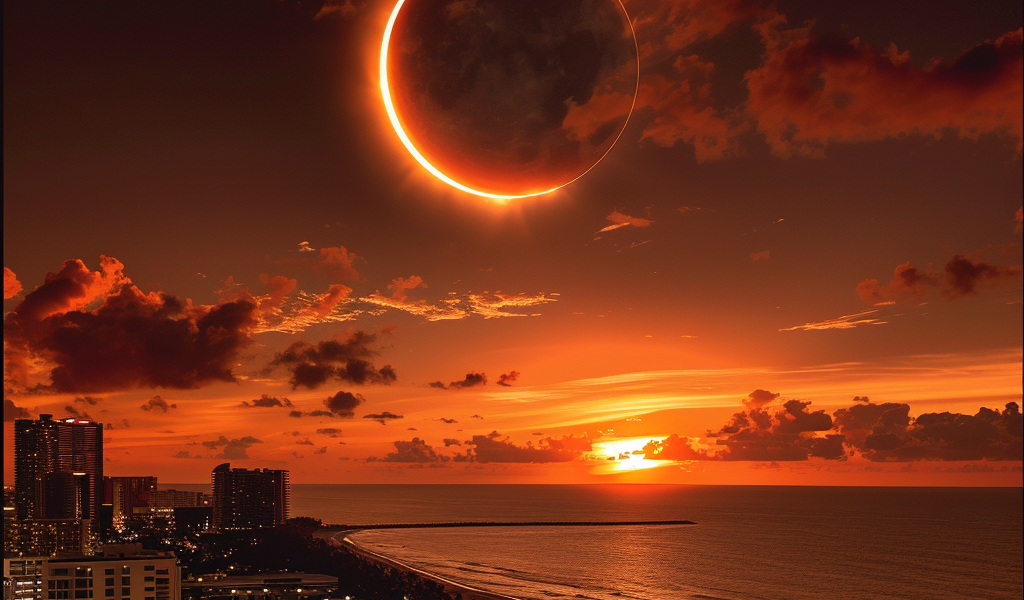On Monday, April 8, 2024, millions of Americans will have the opportunity to witness the 2024 solar eclipse as the sky momentarily darkens in the path of totality. This will mark the first total solar eclipse to pass through North America in seven years, and the next one visible from the contiguous U.S. is not expected until August 23, 2044, according to NASA.
The exact time of the solar eclipse will vary depending on the state and time zone, with visibility also contingent on the weather conditions on that day.
What time is the 2024 solar eclipse?
The eclipse is set to commence in Mexico at approximately 11:07 a.m. PDT, before crossing into Texas at 1:27 p.m. CDT, and concluding in Maine at 3:35 p.m. EDT. Even for those outside the path of totality, there is a chance to witness a partial eclipse.
To determine the specific timing of the eclipse in your area, a viewing guide can be accessed by searching USA TODAY’s database using a zip code. This tool also provides information on the duration, peak, and percentage of the eclipse visible in a particular area.
Major cities in each state for totality experience
- Dallas, Texas: 1:40-1:44 p.m. CDT
- Idabel, Oklahoma: 1:45-1:49 p.m. CDT
- Little Rock, Arkansas: 1:51-1:54 p.m. CDT
- Poplar Bluff, Missouri: 1:56-2:00 p.m. CDT
- Paducah, Kentucky: 2-2:02 p.m. CDT
- Carbondale, Illinois: 1:59-2:03 p.m. CDT
- Evansville, Indiana: 2:02-2:05 p.m. CDT
- Cleveland, Ohio: 3:13-3:17 p.m. EDT
- Erie, Pennsylvania: 3:16-3:20 p.m. EDT
- Buffalo, New York: 3:18-3:22 p.m. EDT
- Burlington, Vermont: 3:26-3:29 p.m. EDT
- Lancaster, New Hampshire: 3:27-3:30 p.m. EDT
- Caribou, Maine: 3:32-3:34 p.m. EDT
Where is the 2024 total solar eclipse?
The eclipse will commence in Mexico, enter the U.S. through Texas, and extend northeast through 13 states, with totality ending in Maine. The path of totality, approximately 115 miles wide, will also pass through major cities such as San Antonio and Austin, Texas; Indianapolis; and Rochester and Syracuse, New York.
It’s a celestial event that promises to captivate the nation, offering a rare opportunity for sky gazers to witness the awe-inspiring display of nature’s grandeur.





